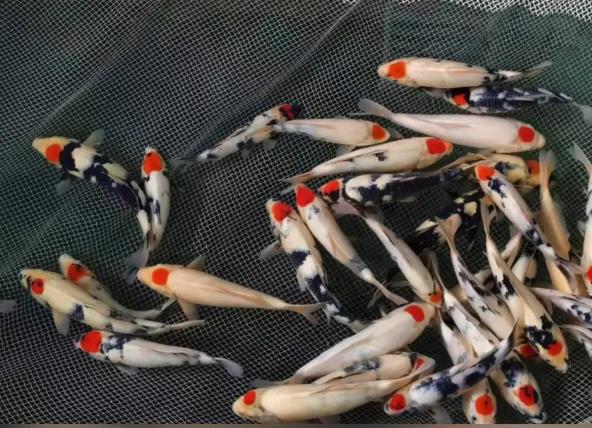Here is a comprehensive guide to koi keeping, covering key aspects such as the breeding environment, water quality management, feeding essentials, and disease prevention:

Breeding Environment
Water Body Size: Koi need a large space. An outdoor pond is ideal (with a depth of ≥ 1.2 meters, and it needs to be deeper in the north to prevent freezing). For indoor keeping, it is recommended to use a floor tank or a large aquarium with a capacity of over 1 ton (with a length of ≥ 2 meters).
Density Control: Keep 1 - 2 adult koi (over 50 cm) per ton of water. For juvenile fish, the number can be slightly more, but leave room for growth.
Filtration System: A physical + biological filtration system is essential. Filter cotton intercepts impurities, and bacterial houses cultivate nitrifying bacteria to decompose harmful substances. The water pump flow rate should be 5 - 10 times the total water volume (for example, a 5000 - 10000 - liter - per - hour water pump for 1 ton of water). Regularly clean the filter media to avoid clogging.
Oxygen - Increasing Equipment: Koi have a high oxygen consumption and need 24 - hour oxygenation (using an air pump and air stone), which is especially important in high - temperature summers.
Water Quality Management
Key Parameters: The suitable temperature is 20 - 25 °C. Avoid temperature differences of more than 3 °C (when changing water, the temperature difference between the old and new water should be ≤ 1 °C). The pH value should be weakly alkaline (7.0 - 8.5) and stable. The ammonia - nitrogen / nitrite content must be 0, and the nitrate content should be < 50 ppm.
Water Change Frequency: Change 1/3 of the water every week in summer and every 2 weeks in winter. Slowly inject the water to avoid stress. Tap water needs to be dechlorinated (by sun - exposure or using a dechlorinating agent).
Feeding Essentials
Feed Selection: Use high - protein feed (≥ 40%) for juvenile fish and color - enhancing feed for adult fish. Supplements such as spirulina and Antarctic krill can be used to enhance the body color.
Feeding Frequency: Feed 3 - 4 times a day when the water temperature is 20 - 25 °C, and the feed should be eaten within 5 minutes. Reduce or stop feeding when the temperature is below 10 °C or above 30 °C. Avoid over - feeding, as leftover feed will pollute the water quality.
Disease Prevention
Common Diseases: For Saprolegniasis, where cotton - like mycelium appears on the body surface, it can be treated with methylene blue or a salt bath. For Pinecone Disease, where the scales stand up, the fish needs to be isolated and bathed with furacilin.
Preventive Measures: Isolate new fish for 30 days and disinfect them with potassium permanganate before putting them into the tank. Regularly add EM bacteria to stabilize the water quality.
Pitfalls for Beginners to Avoid
Avoid Mixed Breeding: Do not keep koi with scavenger fish or tropical fish (as they are prone to infection).
Light Control: Keep the daily light exposure ≤ 6 hours. If the direct sunlight is too strong, provide shade.
Cover the Fish Tank: Prevent koi from jumping out of the tank.
By following the above methods, the healthy growth of koi can be ensured, and they will display their gorgeous body colors. If you have specific questions (such as details about breeding or diseases), you can ask for further information.
